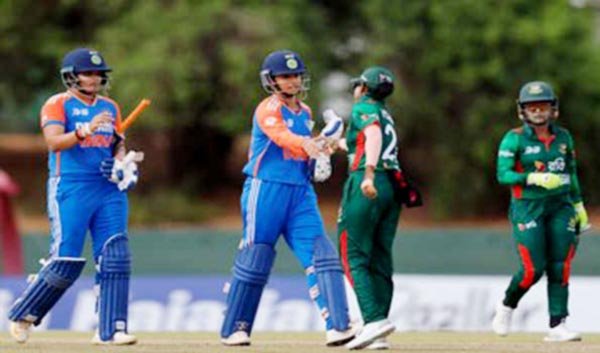- Temp falls by up to 9 degrees in many areas
Bhopal: Cyclone Michaung has brought about powerful and chilly winds, causing a significant drop in temperatures by up to 9 degrees and widespread rainfall across various regions of Madhya Pradesh. Wednesday morning witnessed foggy conditions in Bhopal, Rewa, Gwalior, and the Chambal divisions, including Chhatarpur, Tikamgarh, and Niwari districts.
As anticipated by the meteorological department, Jabalpur experienced light rain in the afternoon, with the possibility of similar conditions in the Shahdol district division. Current temperatures in different areas are as follows: 23 degrees in Bhopal, 22 degrees in Indore, 23 degrees in Ujjain, 23 degrees in Gwalior, and the lowest at 21 degrees in Jabalpur. Pachmarhi followed as the coldest with 22 degrees, while Betul recorded 25.7 degrees, Guna at 23.2, Khandwa at 26.5, Khargone at 26.6, Raisen at 22.4, Ratlam at 25.2, Shivpuri at 24.2, Chhindwara at 25.6, Damoh at 25, and Khajuraho at 23.
Senior meteorologist HS Pandey noted that Jabalpur and Shahdol divisions would be most affected by the storm, expecting drizzle in districts such as Jabalpur, Balaghat, Chhindwara, Katni, Mandla, Narsinghpur, Seoni, Shahdol, Umaria, Dindori, and Anuppur on Wednesday.
The meteorological department predicts a resurgence of rainfall on December 11 and 12 due to the Michaung storm. Despite the conclusion of the monsoon season, the state continues to experience sporadic rainfall owing to various climatic activities.
A day earlier, on Tuesday, much of the state was enveloped in clouds, with dense fog in Jabalpur. The storm has elevated daytime cold, with Indore and Dhar Pradesh experiencing the coldest conditions. Indore saw a remarkable drop of 6.3 degrees in a single day, recording a daytime temperature of 20 degrees.
Expert cautious patients with respiratory disorders
Diwali pollution, Cold, and Rising Ozone Level are matter of concern
Bhopal: With the Diwali celebration over it’s time for those who have respiratory problems to take care of. Especially in the current situation when the air is toxic, polluted and chemicals are released from the recent bursting of crackers on a large extent. Dr. Ashok Arbat, a renowned Pulmonologist at KRIMS Hospital Nagpur, explained, when seasons shift, our bodies require time to acclimate to the changing environment. During this period, respiratory diseases tend to surge. Viral fevers, body aches, colds, and asthma exacerbations become more common, impacting children and senior citizens.
——————————————————————————————-
Here is how the Chemicals used in Crackers affect our Health:
Apart from chemicals, environmental pollution from vehicular combustion, industrial smoke, construction activities, burning of waste material and in-house pollution contributes to above pollution.
The smoke emitted from these fireworks contains harmful substances. Consequently, affecting patients with colds, coughs, asthma, COPD, interstitial lung diseases, those who have recovered from COVID-19, and individuals with COVID-19-related lung fibrosis are particularly vulnerable to the effects of this smoke. On this background Dr. Arbat emphasized the importance of preventive measures during these transitional times to mitigate the risk of respiratory disorders particularly the patients of COPD, Asthma and other respiratory disorders.
He says one can combat the side effects of the chemicals and can keep himself/herself safe from this pollution and have safe and secured life. He also emphasized that the body’s vital organ lungs should be kept safe. Further he added that, it is strongly advised for such individuals to consciously stay away from firecracker smoke. In general, patients with COPD and asthma should steer clear of indoor dust and firecracker smoke.
As a Pulmonologist, he was very inquisitive about causes of respiratory disorders, which led to a study about Asthama & COPD conducted by KRIMS Hospital. The transition from the rainy season to the winter months, the atmosphere has become more clouded. These sporadic clouds contribute to elevated ozone levels in the atmosphere. This can lead to symptoms like burning eyes, breathing difficulties, and, in some cases, colds, coughs, and fevers. Patients with respiratory disorders, including those with no prior history, can experience the exacerbation of their conditions. In addition, smog in the atmosphere has been identified as another contributing factor to respiratory disorders.
His advice to all patients having recurrent cough, cold and chronic respiratory diseases like Asthma, COPD, Interstitial lung disease should protect themselves by taking vaccination against common flu and pneumococcal infection.











